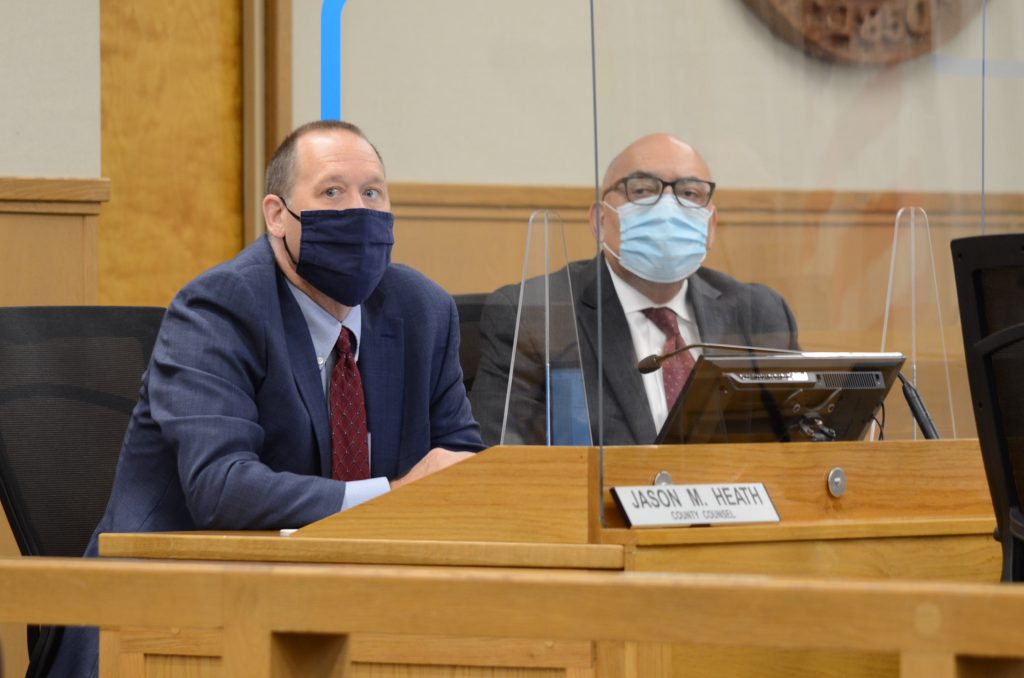Editor’s note: This resource page is part of Santa Cruz Local’s Guide to Local Government. Read an introduction and view all the pages.

Santa Cruz County Counsel Jason Heath, left, sits near Santa Cruz County Administrative Officer Carlos Palacios. (Stephen Baxter—Santa Cruz Local)
Once a proposed law or “ordinance” is on the agenda, the general process looks like this:
- At a city council meeting or county supervisors meeting, city or county staff typically presents information about a proposed change in the law or policy.
- The first reading of an ordinance is presented. Residents have a chance to speak publicly. After discussion among the elected leaders, the city council or county supervisors vote publicly. Most laws need a simple majority to be adopted.
- Changes to local laws require two public hearings. Typically at the next scheduled meeting, a second reading of the ordinance takes place. Residents have another chance to speak publicly. The council or county supervisors vote again.
The new law typically takes effect 30 days after approval of the second reading, unless it’s an emergency action. Delayed start dates can be built into new laws. For instance, a new Santa Cruz city law about homeless camps is supposed to start when the city has a storage program set up and other conditions.
If the proposal involves a new tax, it must be put on a ballot and brought to the voters. Some ballot measures require more than 50% of the vote, others require more than 66% of the vote.
Learn about how local government works in Santa Cruz County and how to make your voice heard.
